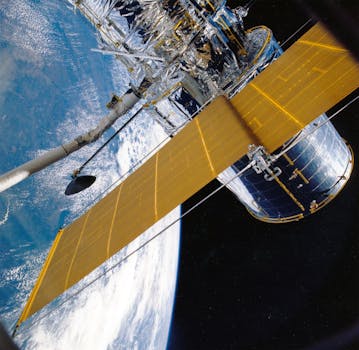The Future is Now: Exploring the Cutting-Edge Innovations in Satellite Telecommunications

The Future is Now: Exploring the Cutting-Edge Innovations in Satellite Telecommunications
Satellite telecommunications have come a long way since the launch of the first commercial communications satellite, Intelsat 1, in 1965. Today, satellite telecommunications play a vital role in global communications, providing connectivity to remote and underserved areas, supporting critical infrastructure, and enabling a wide range of applications, from navigation and weather forecasting to broadband internet access and television broadcasting.
Advancements in Satellite Technology
Recent years have seen significant advancements in satellite technology, driving innovation and growth in the industry. One of the most notable developments is the introduction of High-Throughput Satellites (HTS), which offer significantly higher bandwidth and faster data transfer rates than traditional satellites. HTS have enabled the widespread adoption of satellite-based broadband internet services, such as those offered by HughesNet and Exede Internet.
Another area of innovation is the development of small satellites, also known as CubeSats. These tiny satellites, typically weighing less than 1.33 kilograms, are designed to be low-cost and highly efficient, making them ideal for a wide range of applications, from Earth observation and remote sensing to communications and technology demonstration. CubeSats have democratized access to space, enabling universities, startups, and other organizations to develop and launch their own satellites.
5G and the Role of Satellite Telecommunications
The advent of 5G, the fifth generation of wireless network technology, is set to revolutionize the way we communicate and access information. Satellite telecommunications will play a critical role in the deployment of 5G networks, particularly in areas where terrestrial infrastructure is limited or non-existent. Satellite-based 5G services will enable widespread coverage, low latency, and high-speed data transfer, supporting a wide range of applications, from enhanced mobile broadband and mission-critical communications to massive machine-type communications and ultra-reliable low-latency communications.
Satellite telecommunications will also be essential for the development of the Internet of Things (IoT), which is expected to connect billions of devices worldwide. Satellite-based IoT services will enable the tracking and monitoring of assets, the collection of data from remote sensors, and the transmission of critical information, such as weather data and emergency alerts.
The Future of Satellite Telecommunications
As the demand for satellite telecommunications continues to grow, driven by the increasing need for global connectivity and the deployment of 5G networks, the industry is expected to undergo significant changes. One of the most significant trends is the development of constellations, which involve the launch of hundreds or even thousands of small satellites into low Earth orbit. Constellations, such as those being developed by OneWeb and SpaceX, will enable the provision of global broadband internet services, supporting a wide range of applications, from consumer broadband and enterprise networking to aviation and maritime communications.
Another area of innovation is the development of quantum communications, which will enable the secure transmission of data over long distances. Quantum communications will be particularly important for satellite telecommunications, where data is transmitted over vast distances and security is paramount. Quantum key distribution, a method of secure communication that uses quantum mechanics to encode and decode messages, will play a critical role in the development of secure satellite communications.





